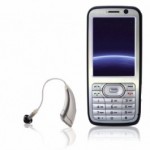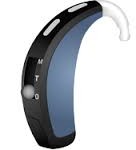 Land-lines are going the way of the dinosaur, and as the number of people with hearing loss grows, so does the need for cell phones to be hearing-aid compatible (HAC). The Federal Communications Commission (FCC) requires wireless service providers and cell phone manufactures to provide HAC phones, and defines them as those with handsets that do not cause interference with hearing-aids and cochlear implants.
Land-lines are going the way of the dinosaur, and as the number of people with hearing loss grows, so does the need for cell phones to be hearing-aid compatible (HAC). The Federal Communications Commission (FCC) requires wireless service providers and cell phone manufactures to provide HAC phones, and defines them as those with handsets that do not cause interference with hearing-aids and cochlear implants.
In the digital phone world, hearing-aid compatibility is accomplished in two ways: 1) the manufacturer reduces the radio-frequency interference to enable acoustic coupling with hearing-aids not operating in telecoil mode, and/or 2) inserts a telecoil to allow for inductive coupling with hearing-aids operating in telecoil mode.
The majority of hearing-aids do not operate in telecoil mode, rather they have one or more microphones to amplify sound and allow for acoustic coupling. To use the phone acoustic interference feature, most hearing-aid wearers just place the phone to their ear, however, some must set their hearing-aid to microphone mode (M). The FCC measures the ability of the phone to operate with acoustic coupling using a rating system from M1 to M4 with M4 being the best. All digital handsets have a M rating for their ability to reduce interference with hearing-aids operating in acoustic (M) mode.
 Some hearing-aids have both a microphone and a telecoil which allows the hearing-aid to couple with the phone telecoil through an electromagnetic field. To take advantage of this telecoil, you must switch your hearing-aid to telecoil mode (T). To do that, look for the letters T and M and select T. The FCC measures the ability of a phone to operate with hearing-aids that contain a telecoil using a rating system from T1 to T4 with T4 being the best.
Some hearing-aids have both a microphone and a telecoil which allows the hearing-aid to couple with the phone telecoil through an electromagnetic field. To take advantage of this telecoil, you must switch your hearing-aid to telecoil mode (T). To do that, look for the letters T and M and select T. The FCC measures the ability of a phone to operate with hearing-aids that contain a telecoil using a rating system from T1 to T4 with T4 being the best.
The FCC requires a specific number or percentage of the handsets sold to meet these M and T ratings. If you wear a hearing-aid, ask for the HAC rating when considering a new phone, or check out the rating here by brand name. To ensure that a particular hearing-aid works well with a particular phone, use them together before purchasing, and don’t forget to engage the HAC features! Hope this HAC tip from IPAT makes selecting your next cell phone as a hearing-aid wearer more successful.

Thank you for sharing it.If you have hearing aids or a cochlear implant, it will now be easier for you to find a cell phone that will work for you.To choose a digital wireless device, a “pairing” system combines a value for radio frequency RF emissions in the mobile phone and a rating for the immunity level in the hearing aid. Lower RF emissions in handsets and higher immunity in hearing aids may help reduce interference.
Thanks for the comments, Dennis!